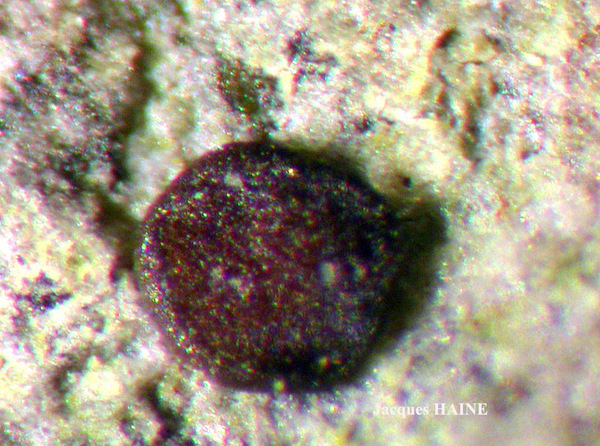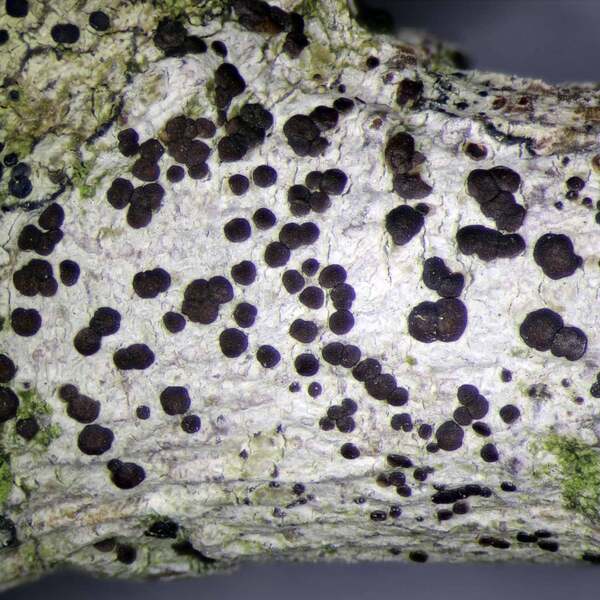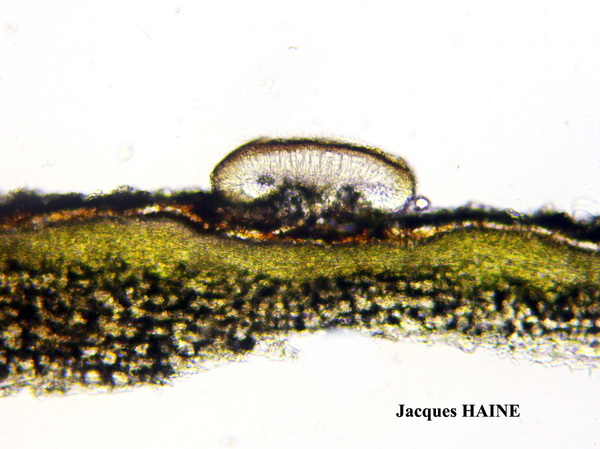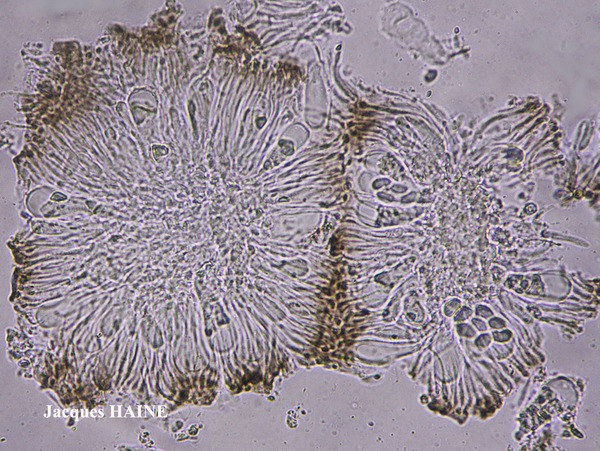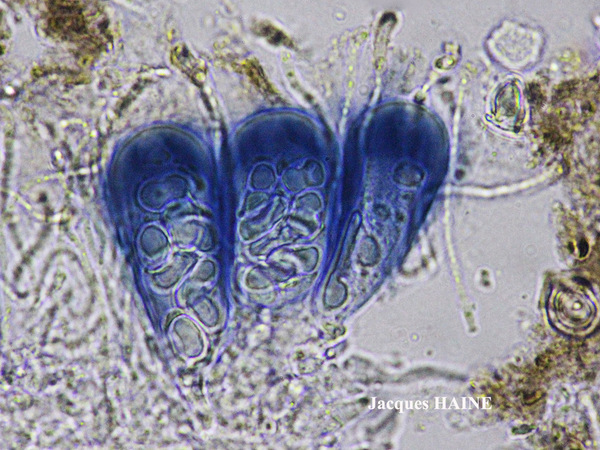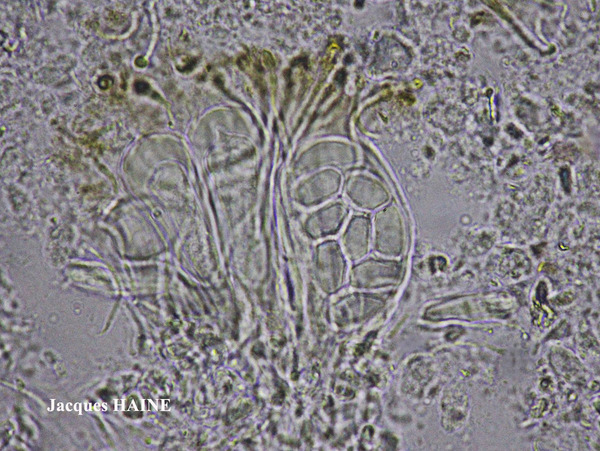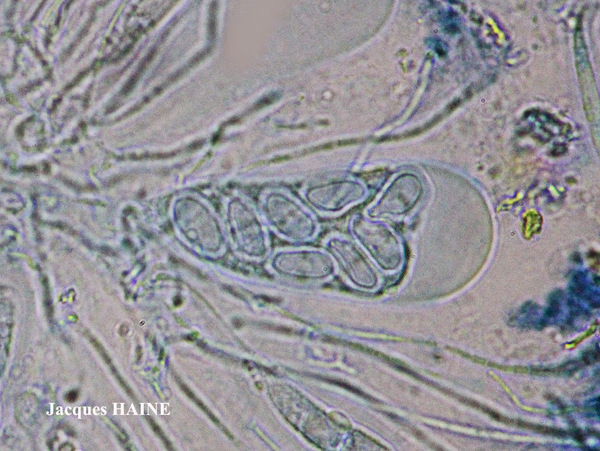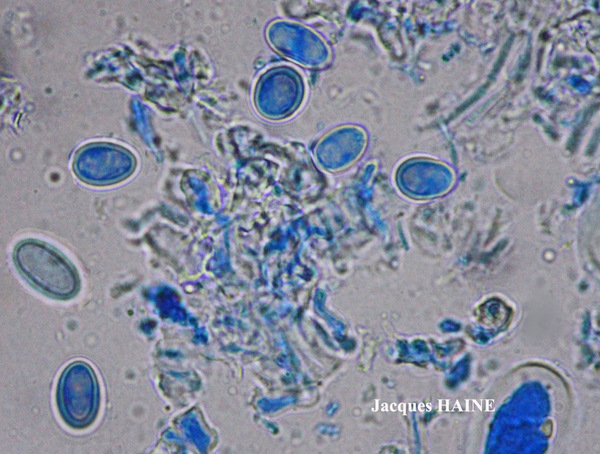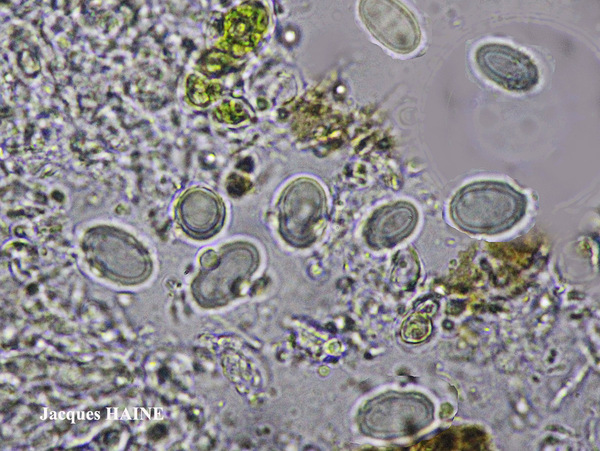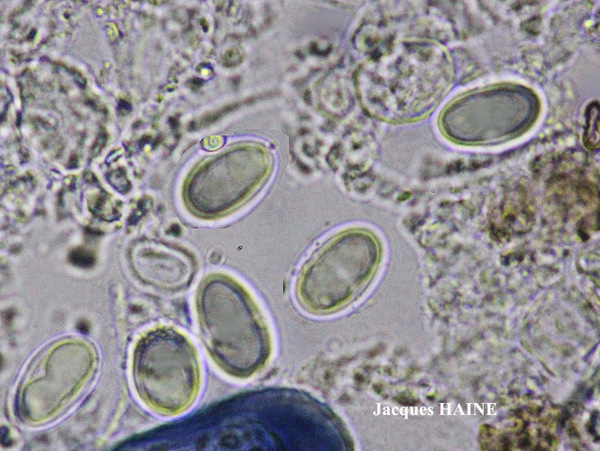Japewiella tavaresiana (H. Magn.) Printzen
in Hertel, Arnoldia, 18: 4, 2000. Basionym: Lecidea tavaresiana H. Magn. in Tavares - Brotéria, N. S., 16: 145, 1947.
Synonyms: Japewia carrollii (Coppins & P. James) Tønsberg; Japewiella carrollii (Coppins & P. James) Printzen; Lecidea carrollii Coppins & P. James
Distribution: N - Lig (Giordani & Incerti 2008). C - Tosc (Loppi & al. 1994, Loppi & Putortì 2001).
Description: Thallus crustose, thinly episubstratic, whitish to pale grey, often delimited by a thin, black prothallus. Apothecia lecideine, 0.2-0.5(-0.6) mm across, round, with a flat, red-brown, finally often blackish brown disc and a rather thick, raised, persistent proper margin. Proper exciple well-developed, pale red-brown in outer part, colourless within, of radiating, gelatinized hyphae; epithecium pale red-brown, K+ dull brown, N-; hymenium colourless, 60-70 μm high; paraphyses coherent, only sparingly branched, except in the lower part adjacent to the hypothecium, the apical cells slightly swollen, with a brown cap; hypothecium colourless, 20-45 μm high, I+ blue. Asci 8-spored, clavate, with a wide apical cushion, Lecidella-type. Ascospores 1-celled, hyaline, ellipsoid, 13-17(-19) x (7-)8-10 μm, with a thick, non-layered wall. Photobiont chlorococcoid. Spot tests: thallus K- or K+ pale yellow, C-, KC-, P-. UV-. Chemistry: thallus with atranorin, usually in low quantities.Note: on smooth or slightly rough bark of small deciduous trees, or on branches and twigs of larger trees, in moist woodlands, especially by streams and bogs below the montane belt. It is included in the Italian red list of epiphytic lichens as “Critically Endangered” (Nascimbene & al. 2013c).
Growth form: Crustose
Substrata: bark
Photobiont: green algae other than Trentepohlia
Reproductive strategy: mainly sexual
Commonnes-rarity: (info)
Alpine belt: absent
Subalpine belt: absent
Oromediterranean belt: absent
Montane belt: absent
Submediterranean belt: absent
Padanian area: absent
Humid submediterranean belt: very rare
Humid mediterranean belt: absent
Dry mediterranean belt: absent
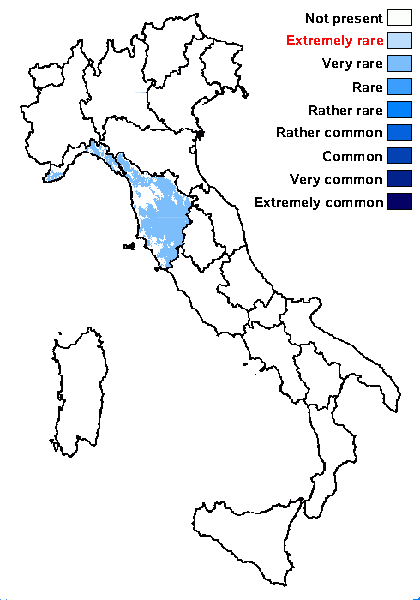
Predictive model
Herbarium samples
Growth form: Crustose
Substrata: bark
Photobiont: green algae other than Trentepohlia
Reproductive strategy: mainly sexual
Commonnes-rarity: (info)
Alpine belt: absent
Subalpine belt: absent
Oromediterranean belt: absent
Montane belt: absent
Submediterranean belt: absent
Padanian area: absent
Humid submediterranean belt: very rare
Humid mediterranean belt: absent
Dry mediterranean belt: absent

Predictive model
| Herbarium samples |
 INDEX FUNGORUM
INDEX FUNGORUM
 GBIF
GBIF
